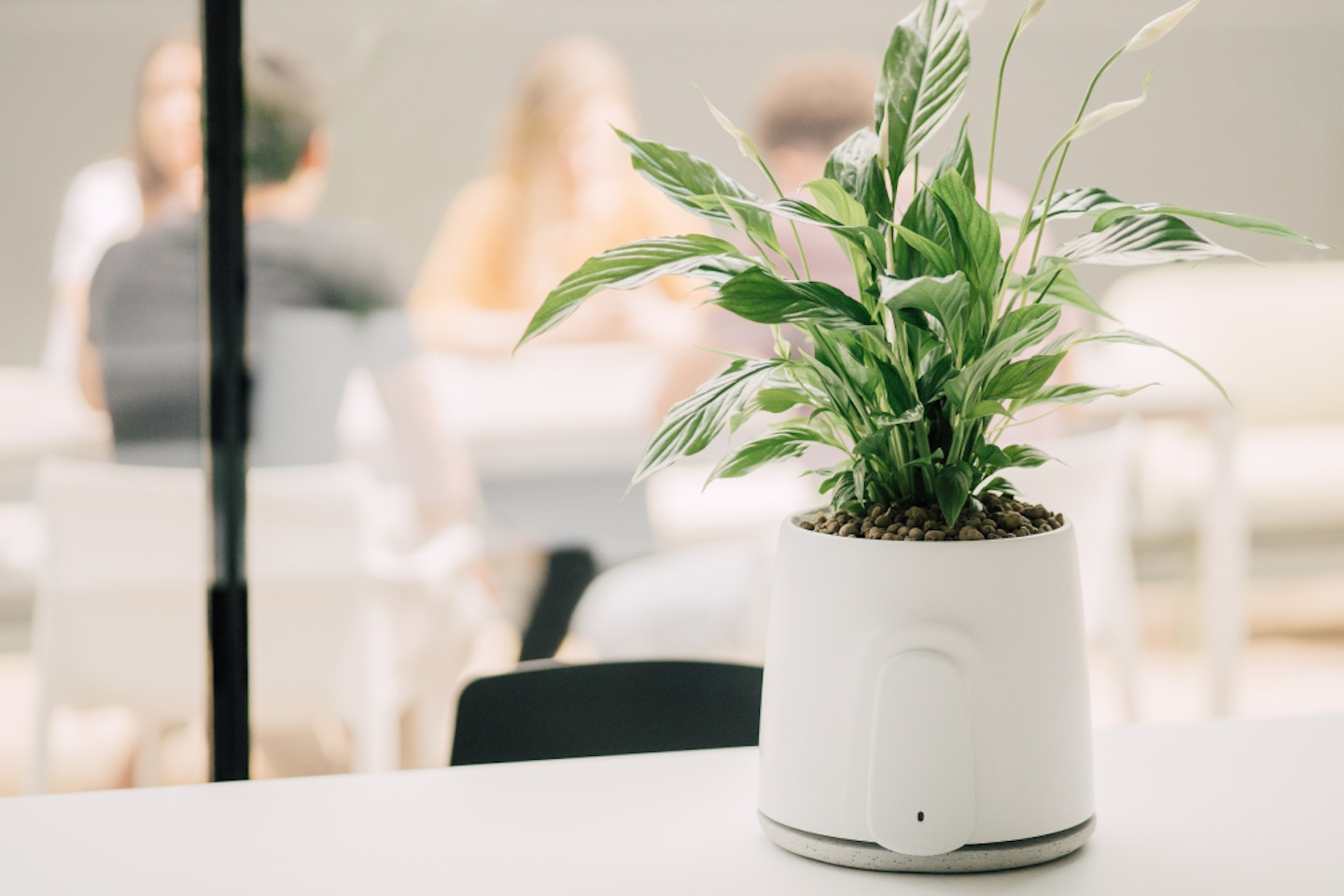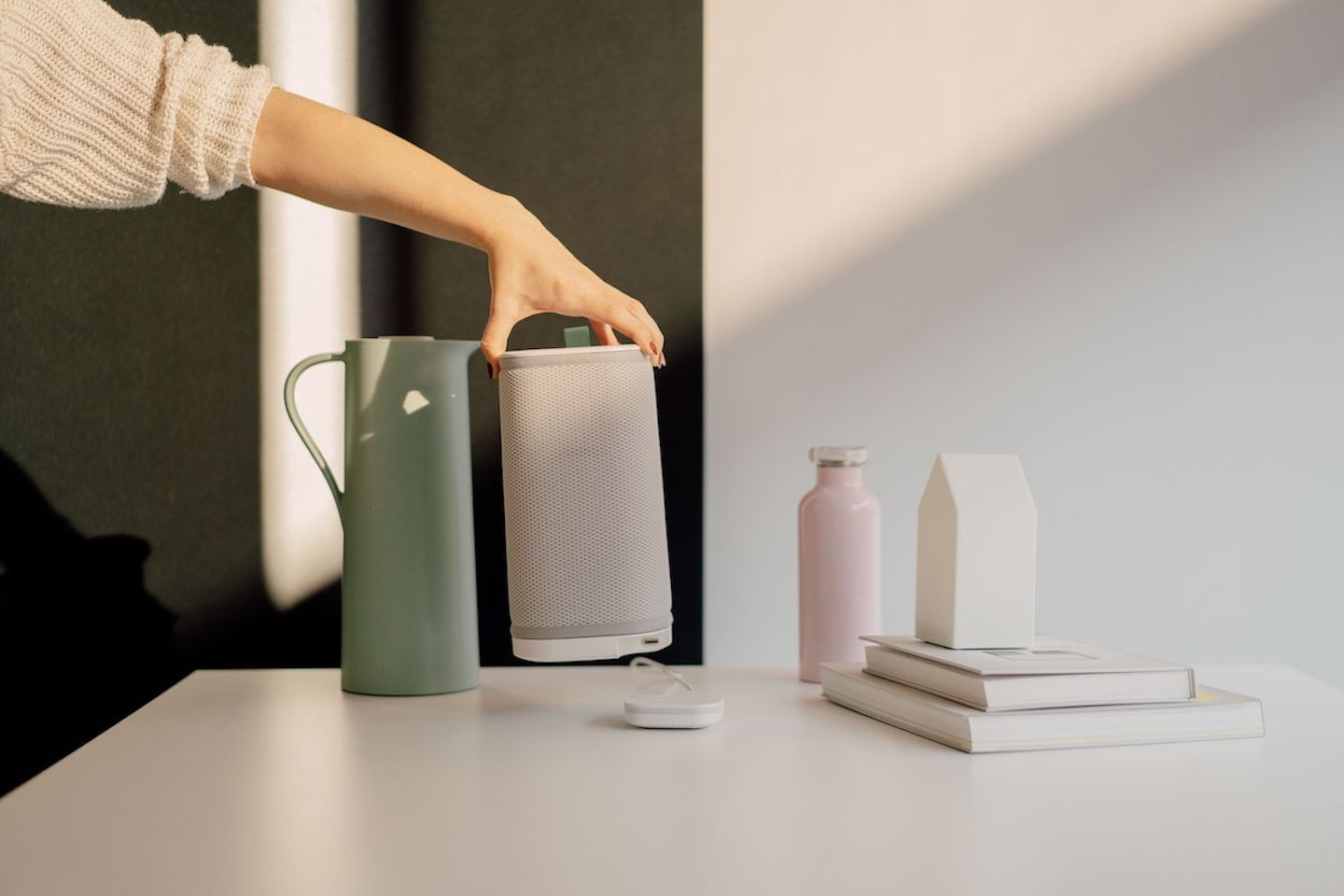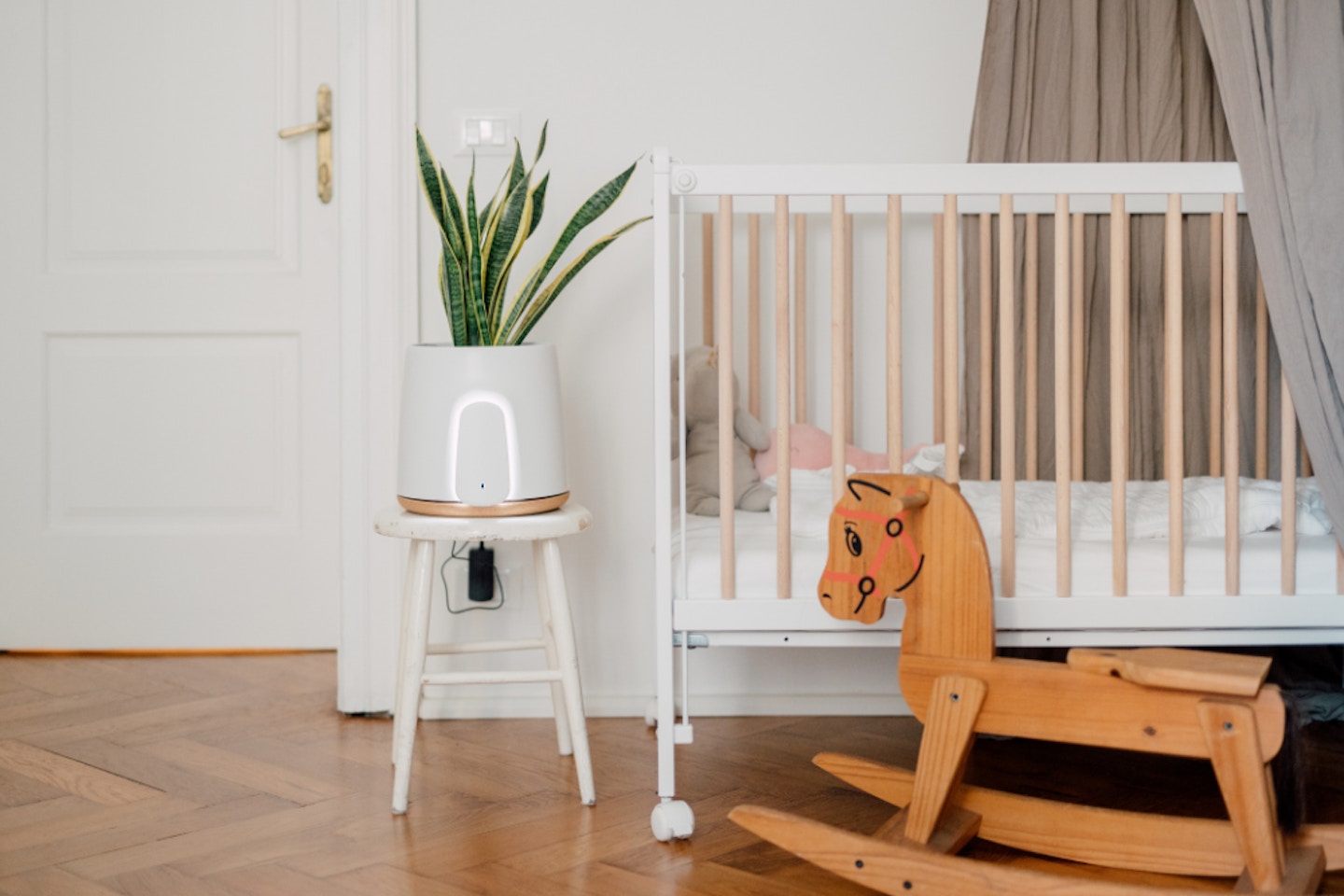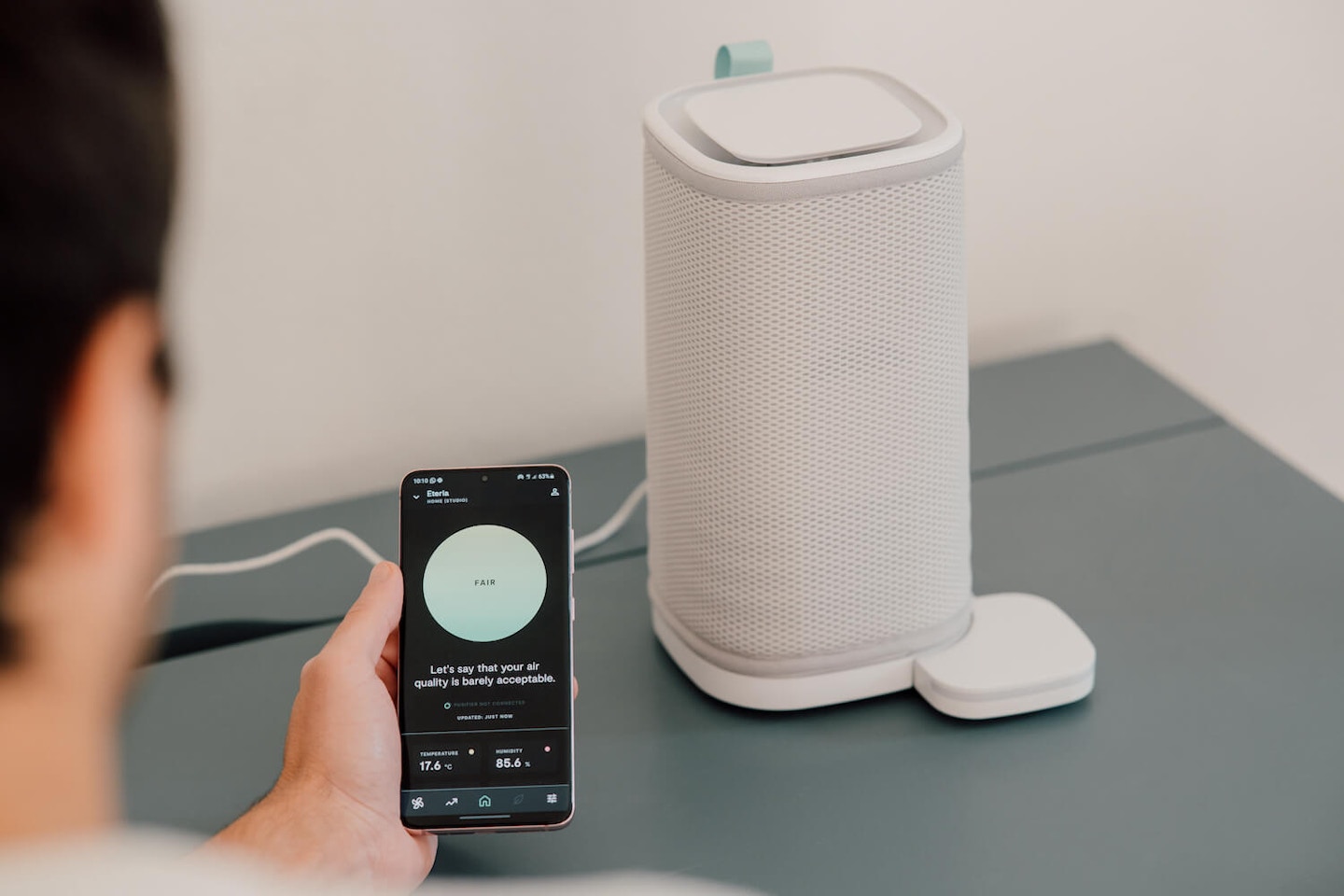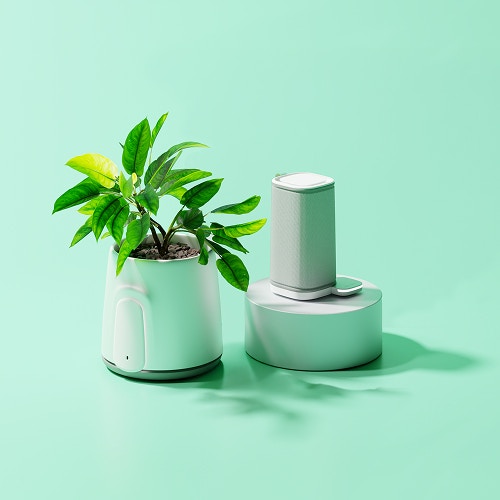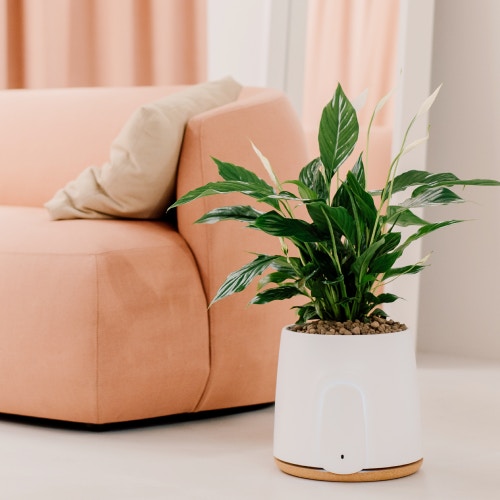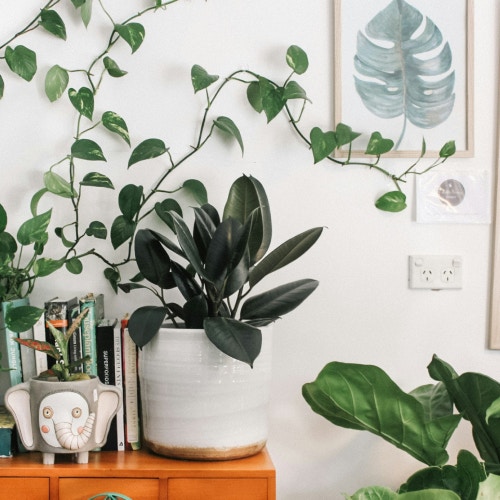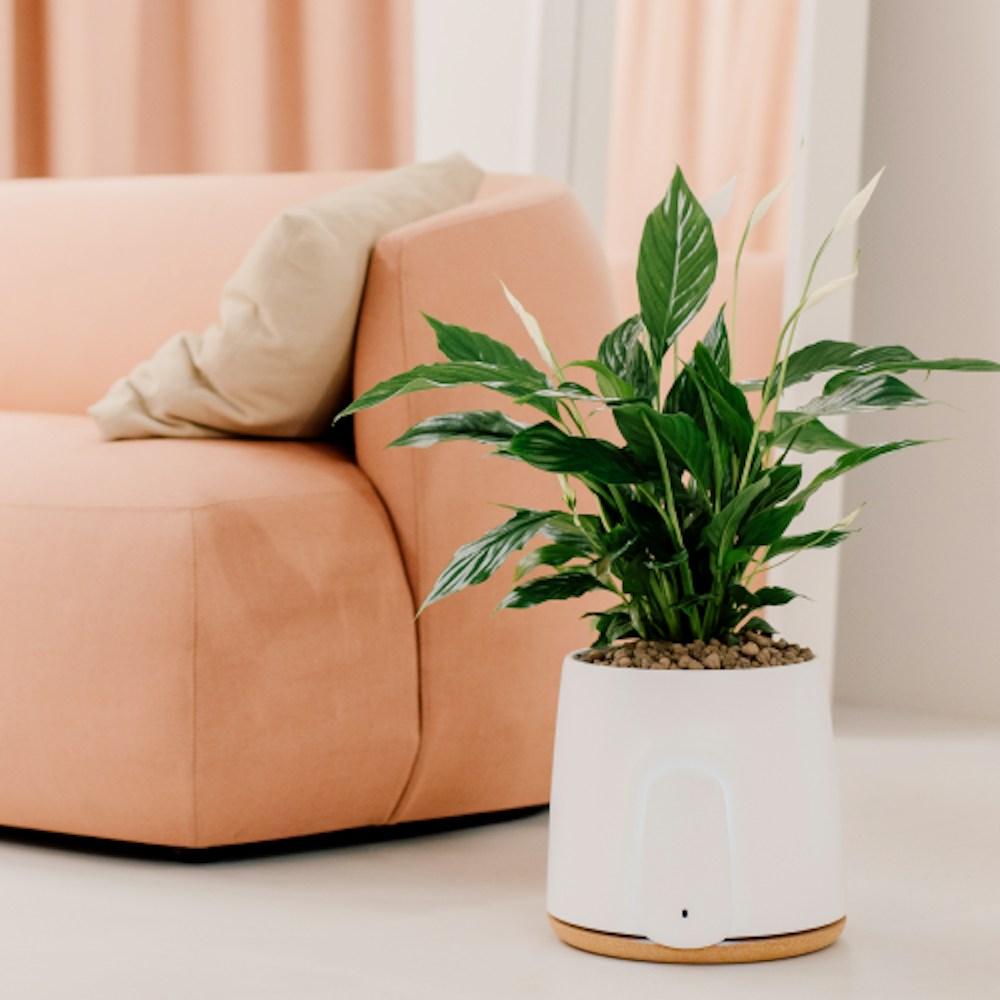
Clearing the air: a guide to help you choose the right air purifier
→
There are many air purifiers and technologies available on the market today, and all the information can be daunting. That’s why we created this short guide to help you clear your doubts and make the best choice for your needs.
- Why you should get an air purifier
- Air purification technologies available on the market
- Photocatalytic Oxidation (PCO)
- HEPA Filtration
- Activated Carbon Filtration
- Ozone Generators
- Ionization - Why choose PCO instead of HEPA?
- Pollutant removal
- Filter maintenance
- Costs over time
- Environmental sustainability - Which Vitesy air purifier is the best for you?
Why you should get an air purifier
We all do our best to take care of our health: we cook healthy food, drink enough water, move our body daily, go to doctor’s appointments, spend time with our loved ones… These are all great choices, but what many forget to think about is probably the common denominator, the most essential factor: the air we breathe! It is estimated that every day each person on average takes 20,000 breaths, but just because we can’t see what’s in the air we breathe with our own eyes, it doesn’t mean that it’s always safe and healthy.
We spend the majority of our time inside, and according to the WHO, indoor air can be up to 5 times more polluted than the outside one. Pollutants are hiding everywhere in our homes, and they derive from many different sources: cleaning products, candles, furniture, food, heating and cooling systems, cigarette smoke, pollen, smog from the outside…
It’s very important to make sure that the air inside our home is as clean as possible in order to prevent side effects such as irritated throat, stuffy nose, headaches, but also worse problems such as respiratory issues. But with all the air purifiers available today, which one should you choose?
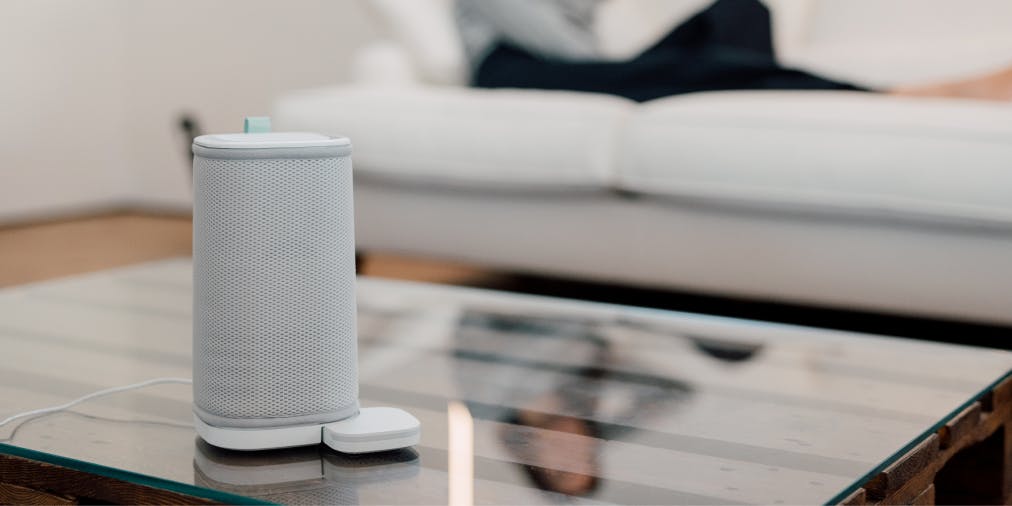
Air purification technologies available on the market
Not all air purifiers use the same filtering or purification technology, each one has its own characteristics which make it different. Here we’ll give you a short description of the most common technologies available today to help guide you in your choice, so that you can make an informed decision based on your personal needs and preferences.
Photocatalytic Oxidation (PCO)
This is the technology that we use in all our air purifiers. PCO technology combines light (photo) and a catalyst (catalysis) to oxidize and break down pollutants (such as VOCs, and microorganisms) and convert them into harmless substances. In our case, as a catalyst we use WO3, tungsten trioxide, which coats our ceramic filters, and visible band LEDs (so we do not use UV light).
You can read more about this in the technology section of our website.
HEPA Filtration
HEPA (High-Efficiency Particulate Air) filters are mechanical filters which are composed of a dense mesh of fibers that can trap and capture airborne particles. This means that the solid particles from the air (like pollen, dust, pet dander…) are mechanically trapped inside the filter but not definitively destroyed. These filters need to be replaced throughout the year to ensure its effectiveness over time.
Activated Carbon Filtration
As the name suggests, activated carbon filters are made from a highly porous form of carbon that is able to absorb gaseous pollutants, odors and chemicals thanks to the large surface area that attracts and traps these particles. So they are most commonly used to remove these substances from the air, but they are not able to remove fine particles like mold, dust, or pollen.
Ozone Generators
The devices which use this technology produce ozone, which is a reactive gas that can neutralize odors and kill some microorganisms. The issue is that ozone can be harmful to human health when it’s present in high concentrations, and it’s even classified as an air pollutant by the EPA (US Environmental Protection Agency). So these devices must be used with caution and respecting the safety guidelines.
Ionization
Finally, these air purifiers emit negative ions into the air, which get attached to airborne particles and thus making them charged. The charged particles are then clustered together and they adhere to surfaces, reducing their presence in the air. Most of these air purifiers emit ozone as a byproduct, which as we’ve seen in the previous paragraph can have negative effects on our health.
Why choose PCO instead of HEPA?
The best and most widespread choices in the air purification market right now are the PCO and HEPA technologies, so we’ll compare them taking into account 4 main factors.
Pollutant removal
As we’ve anticipated, our air purifiers use the WO3 PCO technology. In this case the air purification process is performed by free radicals that are created when tungsten trioxide interacts with oxygen and moisture present in the air, creating a molecular breakdown:
e− + O2 → •O2− Superoxide radical
h+ + OH− → •OH Hydroxyl radical
Billions of these two elements are created in billionths of a second and ensure an effective elimination of pollutants and toxic microorganisms present in the air such as VOCs, viruses, bacteria, odors, particular matter, and nitrogen oxides.
HEPA filters on the other hand, merely trap the pollutants inside the mesh filter. Unfortunately in some cases this can do more harm than good. A study conducted by by Goswami, Jankoswska and Simmons states that:
Although the HEPA filter can effectively capture the microorganisms present in the aerosol, it can also become a breeding ground for microbes. With proper temperature and humidity, microbes trapped inside a filter can multiply using the particulate adhered to the filter as a food source, and their offspring will eventually disperse in the filtered air. Thus, instead of being an apparatus for controlling air quality, it becomes a source of pathogens.
Filter maintenance
While HEPA filters are certainly very effective against solid particles, it’s very important to perform the correct maintenance and be careful of the external conditions to make sure that they are used properly. These filters have a specific duration and they have to be replaced often to be high performing in order to decrease the risk of viruses and bacteria proliferating inside them, especially in humid environments.
Photocatalytic filters are much easier to maintain: since they eliminate the pollutants at molecular level, there is very minimal residue on the surface of the filter. Having a clean filter is very important, because light needs a clean surface with no obstructions to operate at maximum efficiency. Cleaning our ceramic filter is really easy: you just need to wash the filter under running water, let it dry without scratching it, and that’s it! It’s ready to be used again.
Costs over time
Not having to replace the filter in the PCO technology means that there are no extra costs over time, you pay for your air purifier once and don’t have future expenses.
HEPA filters need to be replaced multiple times a year, so this translates to hundreds of dollars throughout the years. Having a photocatalytic filter means saving up to €100 per year.
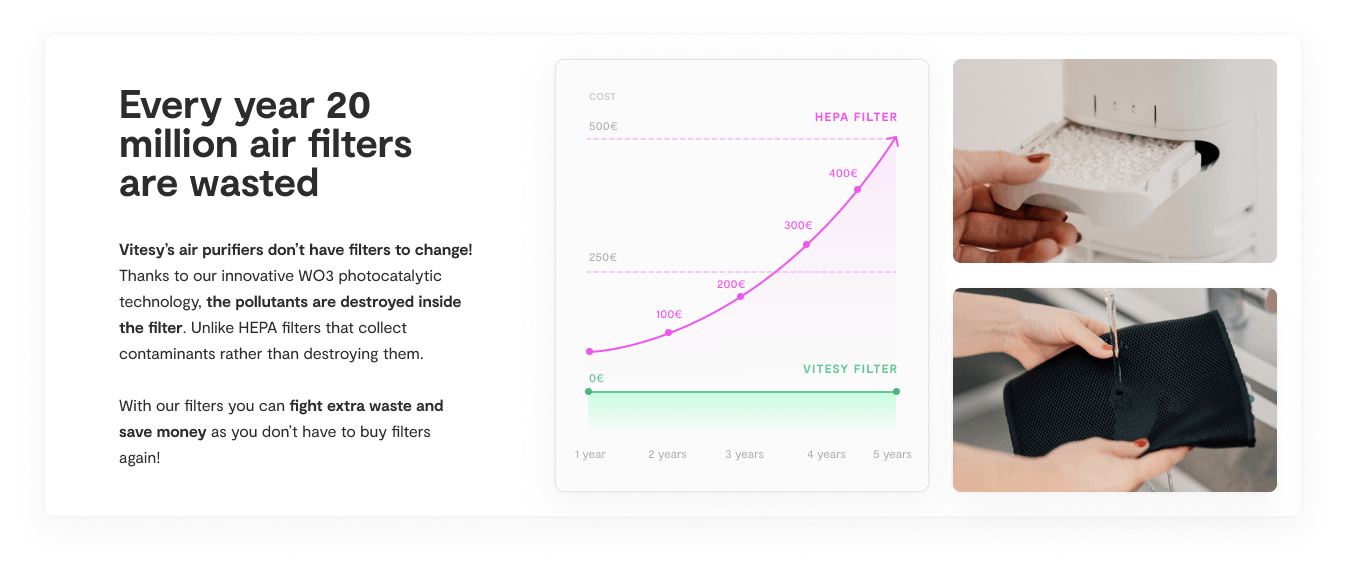
Environmental sustainability
The economic implication of filter replacement goes hand in hand with material waste. Over 20 million filters are wasted every year, and they cannot be recycled.

Which Vitesy air purifier is the best for you?
If after reading this guide you’ve decided that Vitesy’s technology is the best one for your needs but you’re not sure which of our 3 air purifiers to get, don’t worry! We’ll explain in detail the main differences between our air purifiers so that you can get the perfect one for you.
All our air purifiers have a double step purification, with PCO being the main one. Natede Smart and Natede Basic take advantage of phytoremediation, the natural ability of plants to purify your indoor air by transforming pollutants into harmless substances and using them to nourish themselves.
Natede Smart has a smart monitoring system which monitors temperature, humidity, VOCs, CO2 and PM 2.5. Easily connect it with the Vitesy Hub app to interact with 6 different fan modes (silence, standard, performance, auto, custom and timer) and check your air quality parameters in real time to make sure your air is healthy at all times. You can also connect it with Amazon Alexa and Google Home!
Natede Basic is also a design object for your home. Place it wherever you want and choose the fan intensity with a simple hand gesture (silence, standard or performance). It’s perfect if you want to breathe fresh air but you’re not interested in monitoring its quality.
Eteria is your personal and portable air purifier. It has a fabric pre-filter which blocks larger particles like pollen and dust. Monitor temperature, humidity, VOCs and CO2 in every room of your home and/or office thanks to the monitoring modules and create a mapping of your spaces. Move the air purifier wherever you are and breathe clean air at all times. Also Eteria can be connected with Amazon Alexa and Google Home.
